Advanced Microprocessors
- The divide by N counter is shown in figure. If initially Q0 = 1, Q.1 = 1, Q2 = 0. What is a value of N?
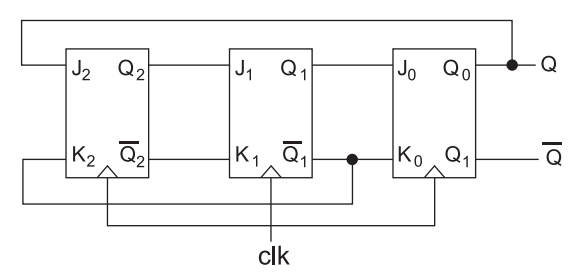
-
View Hint View Answer Discuss in Forum
Given circuit arrangement

From given circuit arrangement, we get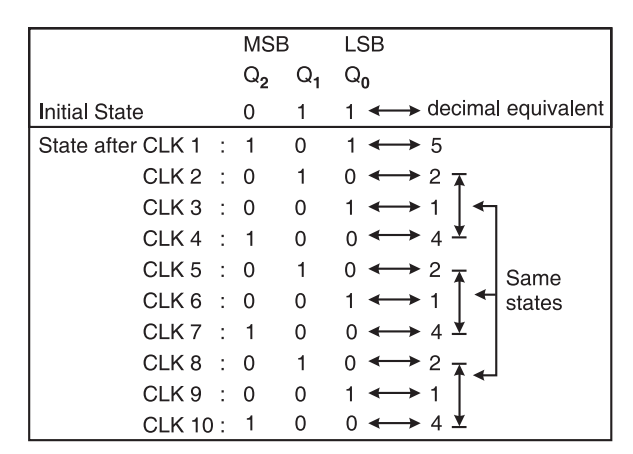
i.e., After first CLK we get 2 → 1 → 4 again and again. Thus we can conclude that the given arrangement is known as Mod–3 counter. Hence alternative (D) is the correct choice.Correct Option: D
Given circuit arrangement

From given circuit arrangement, we get
i.e., After first CLK we get 2 → 1 → 4 again and again. Thus we can conclude that the given arrangement is known as Mod–3 counter. Hence alternative (D) is the correct choice.
- A certain JK flip-flop has tpd = 12·5 ns. The largest MOD counter that can be constructed from these flip-flops and still operate upto 10 MHz is—
-
View Hint View Answer Discuss in Forum
Clock period = 1 = 100ns 10 × 106
∴Number of flip-flop = 100(ns) = 8 12.5(ns)
∴ Maximum MOD counter = 256 ∴ (28 = 256)Correct Option: C
Clock period = 1 = 100ns 10 × 106
∴Number of flip-flop = 100(ns) = 8 12.5(ns)
∴ Maximum MOD counter = 256 ∴ (28 = 256)
- Initially Q0 = Q1 = 0. What will be the logic states of Q0and Q1 immediately after 777th clock pulse for the figure shown below—
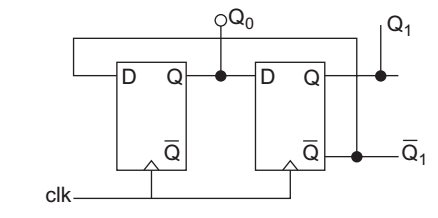
-
View Hint View Answer Discuss in Forum
This is Johnson counter as Q is feedback to input. This means it is a down counter. Number of state = 2n = 4
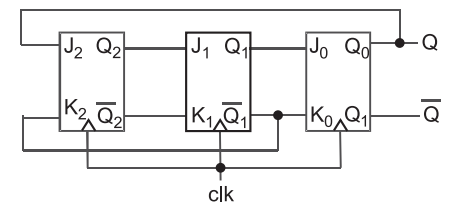
So, After 776th clk pulse → State is 00, as 777 = 194 4
and 1 remainder. Hence, at 777th clk pulse state is 10.Correct Option: B
This is Johnson counter as Q is feedback to input. This means it is a down counter. Number of state = 2n = 4

So, After 776th clk pulse → State is 00, as 777 = 194 4
and 1 remainder. Hence, at 777th clk pulse state is 10.
- A sequential circuit using D flip-flop and logic gates is shown where X and Y are inputs and Z is output. The circuit is—
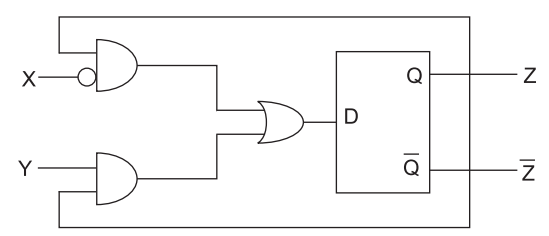
-
View Hint View Answer Discuss in Forum
For D to JK conversion
Qn + 1 = JQ + KQ …(i)
But according to the given figure
Z= XQ + YQ …(ii)
comparing eqn. (i) and (ii), we get
⇒ X = K and Y = J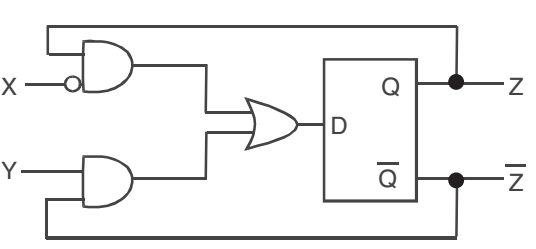
Hence alternative (D) is the correct answer.Correct Option: D
For D to JK conversion
Qn + 1 = JQ + KQ …(i)
But according to the given figure
Z= XQ + YQ …(ii)
comparing eqn. (i) and (ii), we get
⇒ X = K and Y = J
Hence alternative (D) is the correct answer.
- Figure shows the internal schematic of TTL IC, for the input shown, output Y is—
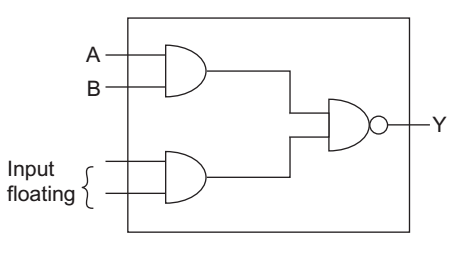
-
View Hint View Answer Discuss in Forum
When inputs are floating, assume floating input/ inputs should be equal to 1. So, Y = 1. AB = AB
Correct Option: D
When inputs are floating, assume floating input/ inputs should be equal to 1. So, Y = 1. AB = AB

